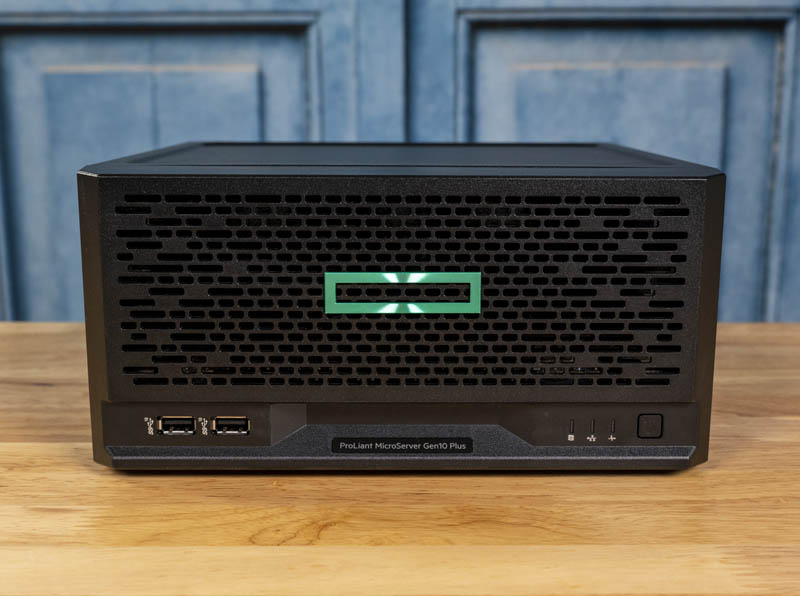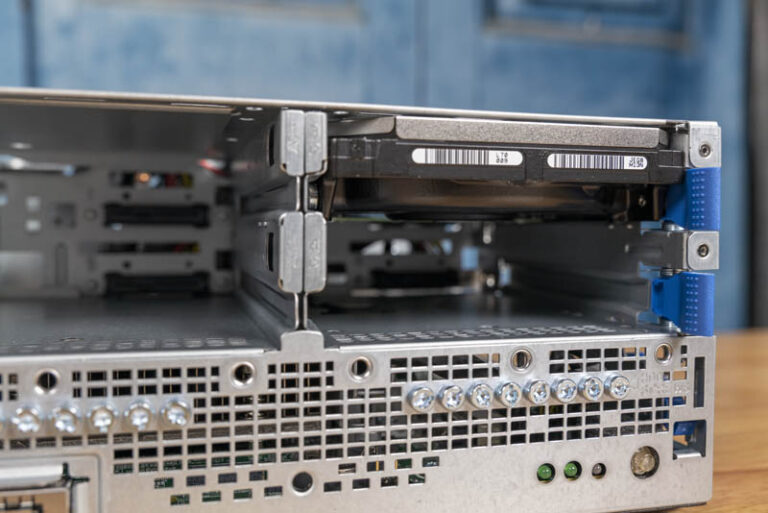The relentless pursuit of efficiency, scalability, and specialized computing has ushered in a new era for server architecture. While traditional, powerful monolithic servers still hold their place, the spotlight is increasingly turning to microserver trends now dominating the modern data center landscape. These compact, energy-efficient, and often purpose-built servers are fundamentally reshaping how organizations deploy, manage, and scale their digital infrastructure, offering compelling advantages for a growing array of workloads. Understanding the current wave of microserver adoption is crucial for anyone navigating the evolving world of cloud computing, edge deployments, and specialized application environments.
Why Microservers Are Gaining Traction

For years, the emphasis in server design was on maximizing the processing power and core count within a single physical unit. This “bigger is better” philosophy served well for many general-purpose workloads. However, as certain types of applications became more distributed, parallel, and less reliant on massive individual CPU horsepower, a new need emerged: efficiently scaling out rather than scaling up.
Microservers address this by providing smaller, self-contained, and highly energy-efficient computing units. They are designed for workloads that benefit from a large number of independent, low-power nodes rather than a few high-power ones. Think of it as a shift from a few highly specialized heavy-duty trucks to a fleet of many agile, fuel-efficient vans. This change is driven by the economics of scale, the demands of specific workloads, and the imperative for sustainability. The current trends indicate that microservers are not just a niche product; they are becoming a dominant force, transforming data centers into more modular, adaptable, and eco-conscious environments.
Key Characteristics and Evolution
While there isn’t one universally agreed-upon definition, microservers generally share several core characteristics that differentiate them from traditional rack servers:
A. Compact Form Factor:
- High Density: Microservers are designed to pack a large number of independent compute nodes into a small physical footprint (e.g., a standard 1U or 2U rack unit). This density saves valuable data center real estate.
- Shared Infrastructure: They often share common infrastructure components such as power supplies, cooling fans, and network backplanes within a modular chassis. This reduces redundant components, lowers energy consumption, and simplifies cabling.
- Hot-Swappable Modules: Individual microserver nodes are typically hot-swappable, allowing for easy maintenance, upgrades, or replacement without powering down the entire chassis or impacting other nodes.
B. Energy Efficiency (Low Power Consumption):
- Low-Power Processors: Microservers typically utilize energy-efficient processors, often derived from mobile or embedded architectures (e.g., ARM-based SoCs, Intel Atom, AMD EPYC Embedded). These processors offer sufficient performance for their intended workloads while drawing significantly less power per core.
- Reduced Overhead: By sharing power and cooling, and having fewer redundant components per server node, microservers inherently have lower overhead power consumption compared to discrete rack servers.
- Optimal Performance per Watt: The design philosophy focuses on maximizing computational power relative to the energy consumed, making them ideal for large-scale, distributed workloads where overall power efficiency is critical.
C. Specialized Workload Focus:
- Scale-Out Architectures: Microservers excel in “scale-out” environments where applications can be distributed across many independent nodes, rather than scaling up a single, powerful server. This provides linear scalability and resilience.
- Horizontal Scalability: They are well-suited for workloads that benefit from many parallel, smaller tasks rather than a few large, complex ones.
- Dedicated Task Allocation: Each microserver node can be dedicated to a specific task or a small set of tasks, optimizing resource utilization and performance for that particular function.
D. Simplified Management:
- Centralized Chassis Management: The entire microserver chassis is typically managed as a single unit, simplifying deployment, monitoring, and updates across multiple nodes from a unified interface.
- Reduced Cabling Complexity: Shared backplanes for power and networking drastically reduce the number of cables required, simplifying rack management and reducing potential points of failure.
Dominant Trends and Workloads
The current dominance of microservers is driven by their suitability for specific, rapidly growing workloads.
A. Web Serving and Cloud Infrastructure:
- Large-Scale Web Front-Ends: Microservers are ideal for serving static content, dynamic web pages, and handling large volumes of concurrent HTTP requests. Each microserver node can efficiently run a web server (e.g., Nginx, Apache) or an application server (e.g., Node.js, Python Flask), with requests load-balanced across the fleet.
- Containerization and Microservices: The inherent modularity and low overhead of microservers perfectly align with containerized applications (Docker, Kubernetes) and microservices architectures. Each service can run on its own microserver node or within a container on a shared node, enabling fine-grained scaling and fault isolation.
- Content Delivery Networks (CDNs): Microservers are being deployed at the edge of networks to power CDNs, caching content closer to end-users to reduce latency and improve content delivery speed.
B. Edge Computing and IoT Gateways:
- Local Processing at the Edge: As vast amounts of data are generated by IoT devices at the “edge” of the network (factories, smart cities, remote locations), microservers provide the compact, low-power compute needed to process, filter, and analyze this data locally, reducing latency and bandwidth consumption to the central cloud.
- IoT Gateway Functionality: Many microservers serve as intelligent IoT gateways, collecting data from various sensors, performing local analytics, and securely transmitting aggregated insights to the cloud.
- Autonomous Systems: In applications like autonomous vehicles or industrial robotics, microservers provide the real-time processing capabilities required for local decision-making and control.
C. Big Data Analytics and Distributed Databases:
- Hadoop/Spark Clusters: Microservers are well-suited for distributed computing frameworks like Apache Hadoop and Spark. Each node can act as a data node or worker node, processing subsets of large datasets in parallel. Their low power consumption makes building large, cost-effective clusters feasible.
- NoSQL Databases: Databases like Cassandra, MongoDB, or Hbase, which are designed for horizontal scaling across many nodes, can leverage microservers efficiently.
- Distributed File Systems: Storing and managing large distributed file systems (e.g., Ceph) across many microserver nodes provides scalable and resilient storage.
D. Dedicated and Specialized Services:
- Cache Servers: Running in-memory caching systems (e.g., Redis, Memcached) on dedicated microserver nodes provides fast data access for frequently requested information.
- Message Queues: Deploying message queue brokers (e.g., Kafka, RabbitMQ) on microservers allows for efficient and scalable asynchronous communication between distributed applications.
- Network Functions Virtualization (NFV): Telecommunication companies are using microservers to virtualize network functions (e.g., firewalls, load balancers, routers) previously run on specialized hardware, leading to greater flexibility and lower costs.
Key Technologies Powering Microserver Dominance

The current wave of microserver adoption is fueled by specific technological advancements.
A. ARM-Based Processors:
- Energy Efficiency Leader: ARM-based System-on-Chips (SoCs), traditionally dominant in mobile devices, have made significant inroads into the server market due to their exceptional power efficiency. Companies like Ampere Computing and NVIDIA (with Grace CPU Superchip) are developing powerful ARM-based server processors.
- Cloud Native Alignment: ARM’s architecture often aligns well with cloud-native workloads, microservices, and distributed computing paradigms. Cloud providers like Amazon (with their Graviton processors) have heavily invested in ARM, demonstrating its viability for hyperscale environments.
- Cost-Effectiveness: The lower power consumption and often lower manufacturing costs of ARM-based chips can lead to significant Total Cost of Ownership (TCO) savings in large-scale deployments.
B. Advanced Intel Atom and AMD EPYC Embedded Processors:
- Low-Power x86 Options: Intel’s Atom series and AMD’s EPYC Embedded processors offer low-power x86 alternatives specifically designed for edge, network, and microserver applications. They provide compatibility with existing x86 software ecosystems while delivering improved performance per watt.
- Integrated Capabilities: These processors often integrate networking, security, and other functionalities directly onto the SoC, reducing the need for discrete components and further lowering power consumption and complexity.
C. NVMe Storage:
- High-Speed, Low-Power Storage: The advent of NVMe (Non-Volatile Memory Express) SSDs has revolutionized storage. NVMe offers significantly higher performance and lower latency than traditional SATA or SAS SSDs, and its efficiency is crucial for compact microserver designs where every watt counts.
- Direct CPU Connection: NVMe connects directly to the CPU via PCIe, maximizing data throughput and minimizing bottlenecks, which is vital for data-intensive microserver applications.
D. High-Density Chassis Designs:
- Modular Server Blades: Manufacturers like HPE (with Moonshot), Supermicro, and Dell are designing highly dense modular chassis that can house dozens or even hundreds of microserver nodes, sharing power, cooling, and networking.
- Optimized Cooling: These chassis designs incorporate advanced cooling techniques, often utilizing direct-to-chip or liquid cooling solutions to manage heat within a dense footprint efficiently.
E. Software-Defined Networking (SDN) and Network Function Virtualization (NFV):
- Flexible Networking: SDN allows for dynamic provisioning and management of network resources, which is crucial for managing large clusters of microservers where network topology needs to be highly flexible.
- Virtualization of Network Functions: NFV enables network services (firewalls, load balancers, DNS) to run as software on general-purpose microserver hardware, replacing expensive, dedicated network appliances and improving agility.
The Impact: Reshaping Data Centers and Beyond
The dominance of microserver trends is not just an academic discussion; it has profound, tangible impacts across various aspects of IT and business.
A. Significant Cost Savings (TCO):
- Lower Power Consumption: Reduced electricity bills due to the inherent energy efficiency of microserver nodes and shared infrastructure.
- Reduced Cooling Needs: Less heat generated means less energy spent on cooling.
- Space Efficiency: Higher density means less data center floor space and rack units are required for the same amount of compute capacity, saving on real estate costs.
- Simplified Management: Fewer physical components and centralized management reduce operational expenditure (OpEx) for IT staff.
B. Enhanced Scalability and Agility:
- Granular Scaling: Organizations can add compute capacity in much smaller increments (individual microserver nodes) as needed, avoiding over-provisioning and allowing for precise scaling.
- Rapid Deployment: The modular nature of microservers allows for quick deployment and redeployment of resources, improving IT agility and responsiveness to business demands.
- Fault Isolation: The failure of one microserver node typically does not impact other nodes in the chassis, enhancing overall system resilience and fault isolation for distributed applications.
C. Environmental Benefits (Green IT):
- Reduced Carbon Footprint: Lower energy consumption directly translates to reduced greenhouse gas emissions, contributing to corporate sustainability goals.
- Less E-Waste: While individual components might be smaller, the focus on optimized lifecycles and shared infrastructure can contribute to overall less electronic waste per unit of compute capacity.
D. Enabling New Architectures and Services:
- Edge Computing Expansion: Microservers are the ideal hardware for pushing compute closer to the edge, enabling real-time analytics, AI inference, and autonomous operations in remote or localized environments.
- Hyperscale Cloud Growth: Cloud providers can build even larger, more efficient, and more cost-effective cloud infrastructures using microserver designs, driving down the cost of cloud services for end-users.
- Custom Hardware for Specific Workloads: The microserver trend encourages the development of highly specialized hardware tailored to specific application needs, moving beyond general-purpose computing.
Looking Ahead: The Future of Microservers
The dominance of microserver trends is set to continue, with several exciting developments on the horizon.
A. More Powerful and Specialized ARM Processors:
- Continued Performance Growth: ARM-based server processors will continue to close the performance gap with traditional x86 CPUs for general-purpose workloads, while maintaining their power efficiency advantage.
- Domain-Specific Accelerators: Future ARM-based microservers will likely integrate more specialized accelerators (e.g., AI/ML inference engines, cryptography engines, network processing units) directly onto the SoC, further optimizing performance per watt for specific tasks.
B. Advanced Cooling Integration:
- Pre-Integrated Liquid Cooling: More microserver chassis will come with integrated liquid cooling solutions (e.g., direct-to-chip or immersion-ready designs) as standard, allowing for even higher densities and greater energy efficiency.
- Passive Cooling for Edge: For remote or extreme edge deployments, microservers will leverage advanced passive cooling techniques, reducing the need for active fans and making them even more robust.
C. Edge-Native Microservers:
- Ruggedized Designs: Microservers designed to withstand harsher environmental conditions (temperature extremes, dust, vibration) will become more common for industrial and outdoor edge deployments.
- Connectivity Hubs: Future microservers at the edge will integrate even more diverse connectivity options (5G, satellite, Wi-Fi 6E) to serve as powerful multi-access communication hubs.
D. Increased Software-Hardware Co-Design:
- Optimized Software Stacks: Software vendors and operating system developers will further optimize their stacks to take full advantage of microserver architectures, particularly ARM-based ones, ensuring maximum efficiency.
- Container-Native OS: Lightweight, container-native operating systems designed specifically for microserver environments will gain traction, reducing overhead and improving boot times.
E. Sustainability Focus Intensifies:
- Full Lifecycle Assessment: The focus on sustainability will extend beyond just operational energy efficiency to encompass the entire lifecycle of microservers, from responsible sourcing of materials to end-of-life recycling.
- Waste Heat Reuse: More microserver deployments, especially in large data centers, will integrate with systems that capture and reuse their waste heat for other purposes (e.g., building heating).
Challenges and Considerations for Adoption
Despite their advantages, the widespread adoption of microservers comes with its own set of challenges.
A. Workload Suitability:
Microservers are not a universal solution. Workloads that require massive single-threaded performance or extremely large memory footprints on a single node may still be better suited for traditional, more powerful servers. Identifying suitable workloads is key.
B. Software Compatibility:
While ARM’s server ecosystem is growing, some legacy x86-only software may require re-compilation or significant re-architecture to run efficiently on ARM-based microservers. This can be a barrier for some enterprises.
C. Management Complexity (Initially):
While shared infrastructure simplifies some aspects, managing a fleet of hundreds or thousands of individual microserver nodes, especially in a distributed edge environment, introduces new management complexities that require sophisticated orchestration tools.
D. Initial Investment:
While TCO is often lower, the initial capital expenditure for a modular microserver chassis and its nodes might be higher than a few traditional rack servers for smaller deployments.
E. Vendor Ecosystem:
The microserver market, especially for ARM-based options, is still maturing compared to the established x86 server ecosystem, meaning fewer vendors and potentially less diverse hardware options currently available.
Conclusion: Small Servers, Big Impact
The current microserver trends dominating the data center and edge computing landscapes signal a profound shift in how we approach scalable and efficient computing. These compact, energy-efficient powerhouses are proving to be ideal for a vast and growing array of scale-out, distributed, and specialized workloads. By prioritizing performance per watt, high density, and modularity, microservers are not only delivering significant cost savings and enhanced agility but also playing a crucial role in building a more sustainable and environmentally responsible digital infrastructure. As the demands for ubiquitous computing continue to surge, the “small” server is poised to make an even bigger impact, fundamentally shaping the future of IT for years to come.



